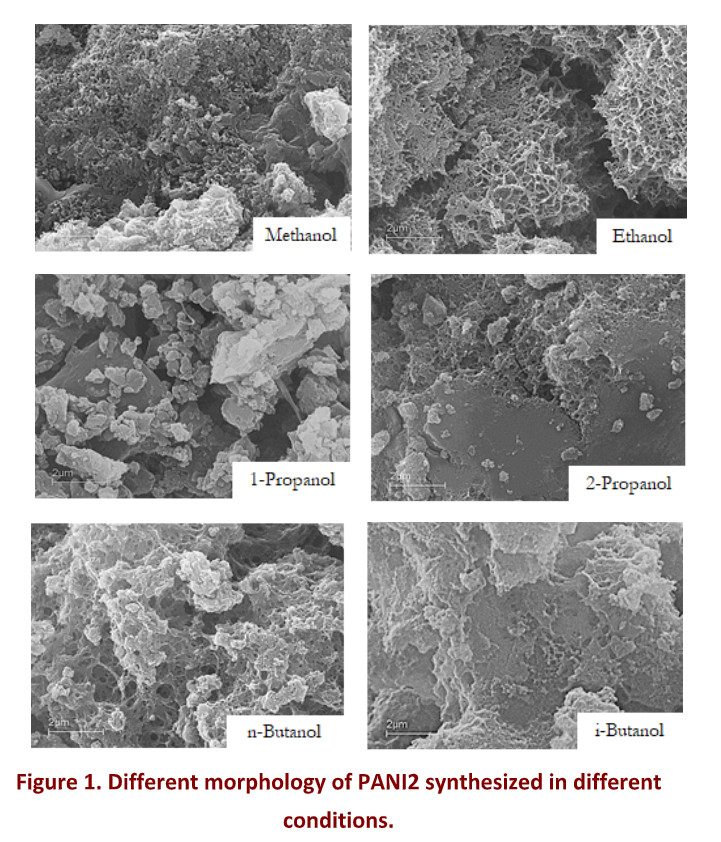Highly porous polyaniline (PANI): a novel green catalytic method for morphology control
Ermelinda Falletta, Cristina Della Pina, Vasilissa Nikonova, Veronica Bortolotto, Claudia L. Bianchi

The global conducting polymers (CPs) market was valued about 7 billion USD in 2023 and is expected to continue growing at a CAGR of 9.10% in the coming years [1]. CPs combine the electric charge conduction properties of metals with the advantages of polymers and for this reason they are also known as synthetic metals. Based on their outcoming features, CPs find application in many fields, such as electronics, sensor, biomedical, optoelectronic, environmental remediation, etc. [2]. Among the CPs, polyaniline (PANI) is unique for its unique characteristics. Moreover, it is biocompatible and its cytotoxicity depends upon the synthetic method from by which it is obtained [3]. The traditional synthesis of polyaniline is based on an oxidative polymerization reaction mechanism, employing aniline as starting the reagent and a strong inorganic oxidant in stoichiometric amount. Despite this approach is still the most used and, this procedure leads to a large amount of waste, so has become less practicable in the last years due to new strictly rules on environmental protection and pollution limits. Moreover, the use of aniline as the reagent causes the formation of harmful and cancerogenic by-products, such as benzidine, thus limiting the use of polyaniline for medical applications [3]. On this regard, the possibility to use more environmentally friendly oxidants, such as molecular oxygen or hydrogen peroxide, and an alternative reaction mechanism avoiding the production of toxic by-products represents an attractive goal [4]. Based on these aspects, in the last years a new synthetic method has been developed starting from more sustainable reagents (N-phenyl-p-phenylenediamine and molecular oxygen or hydrogen peroxide) demonstrating an improved biocompatibility of the obtained polymer [3].

However, PANI obtained from aniline (PANI1) and that synthesized from N-phenyl-p-phenylenediamine (PANI2) show important differences, in particular in terms of morphology, porosity (porous PANI1 and compact PANI2) and conductivity (higher for PANI1). Since it is not clear what are the parameters mainly affecting the final properties of PANI2, the goal of the present work consists in the investigating the mechanisms involved in the synthesis of the two materials and how modulating the final properties of PANI2. It is demonstrated that properly tuning alcohols/water ratio as well as acidic dopant, a polymeric material with tailored morphology, porosity and conductivity can be obtained via an eco-friendly catalytic route. Furthermore, a comparative LCA (Life Cycle Assessment) study was conducted on PANI synthesis to compare the traditional methods (PANI1) and the "green" one (PANI2) to determine whether this latter reduces the environmental impact.
References
- Conducting Polymers Market Size, Demand & Future Application By 2032 (polarismarketresearch.com)
- H. Ding, A.M. Hussein, I. Ahmad, R. Latef, J.K. Abbas, A.T.A. Ali, S.M. Saeed, A.S. Abdulwahid, M.F. Ramadan, H.A. Rasool, A. Elawady Alex. Eng. J. 2024, 88, 253.
- C. Della Pina, Z. Capáková, A. Sironi, P. Humpolíček, P. Sáha, E. Falletta Int. J. Polym. Mater. 2017, 66(3), 132.
- C. Della Pina, M.A. De Gregorio, L. Clerici, P. Dellavedova, E. Falletta J. Hazard. Mater. 2018, 344, 308.